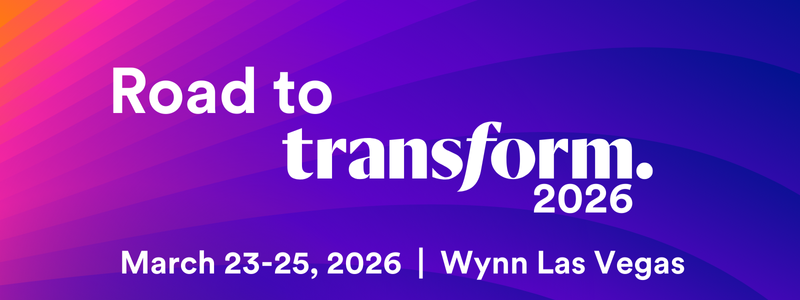
Yesterday, September 9, on our first stop on our Road to Transform, we supported our partner Sequoia at their The Grove Conference in San Francisco. The day centered on AI in the workplace and employee experience, opening with a thought-provoking keynote from Jacob Morgan and followed by the Transform-led AI Track, showcasing content from our Exec Series. A panel of people leaders discussed real-world AI applications, followed by an interactive workshop where attendees shared their progress in their AI journeys in the workplace and made predictions about AI.
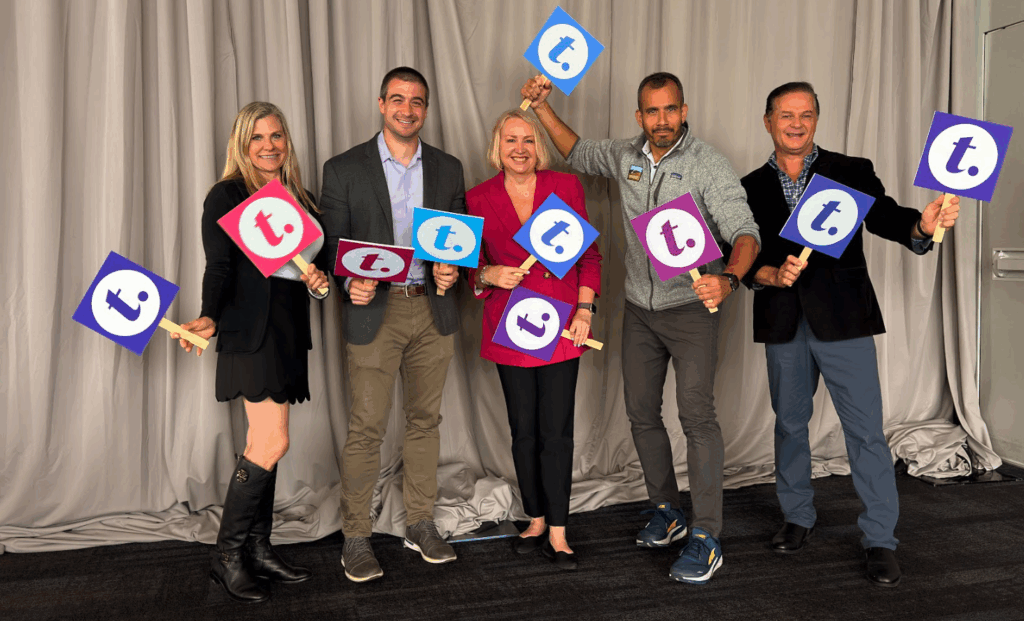
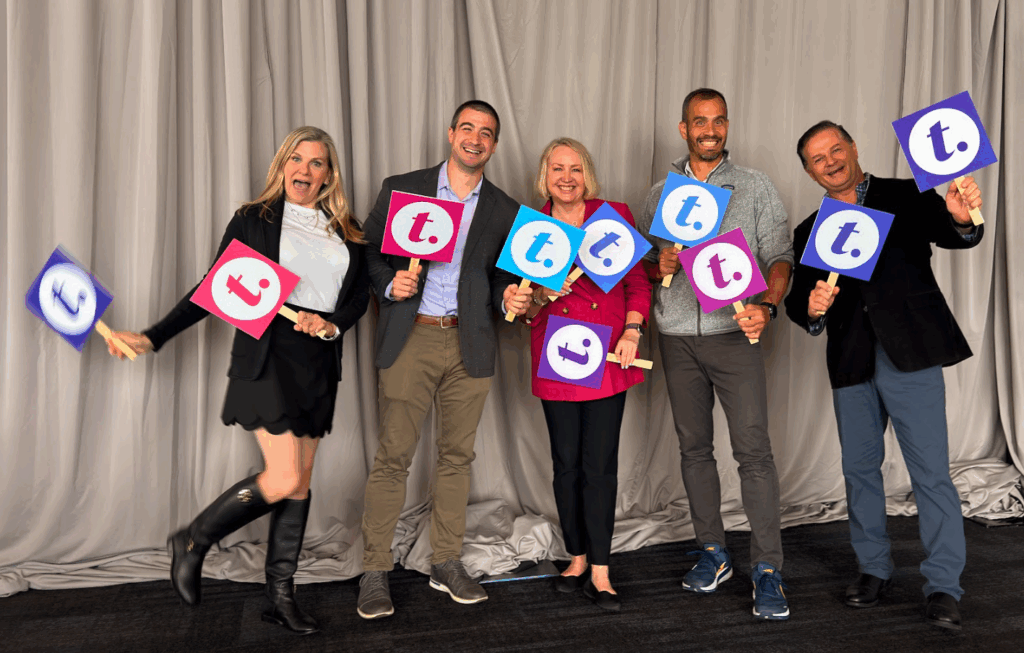
Here’s what stood out.
Jacob Morgan: The Eight Laws of Employee Experience
Jacob Morgan set the stage with a keynote based on his upcoming book, Eight Laws of Employee Experience. His message was clear: many organizations lost their footing post-pandemic, rushing to keep talent at all costs and creating practices that aren’t sustainable. He noted how entitlement culture has quietly taken hold with employees asking for more while working less, and even parents showing up at job interviews for their children. Leaders see it, but few are willing to say it out loud.
AI came up too, though not as a cure-all. Several CHROs told Jacob it will take them three to four years just to clean and standardize data before they can implement AI effectively.
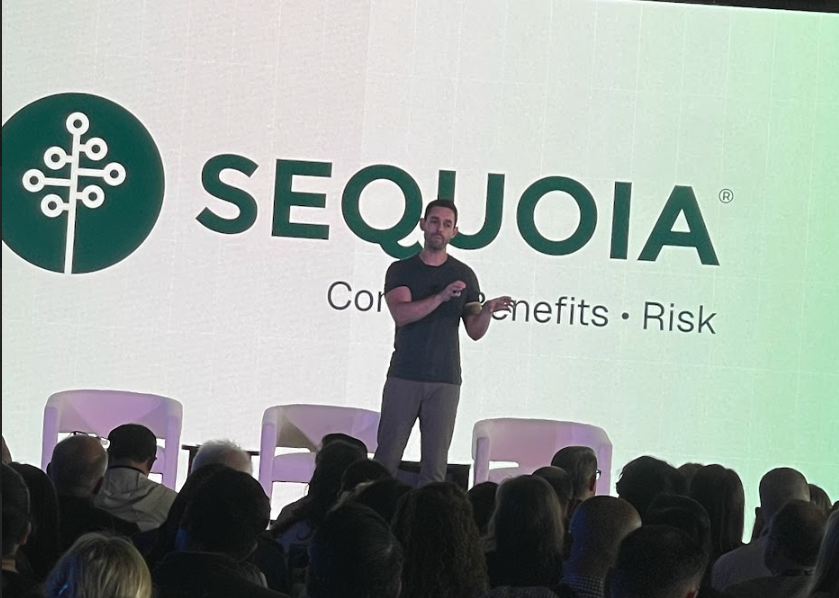
The Eight Laws he shared provide a framework for organizations ready to move forward:
- Decode the Human Signal: Understand aspirations, fears, and preferences, not just skills.
- Act with Empathetic Excellence: Competence, merit, and empathy together, raising standards with humanity.
- Grow or Go: Growth opportunities are the new job security.
- Design for Flexibility: Shift from jobs to skills, and adapt with career dashboards.
- Make People the First Principle: Look at emotional, social, moral, and professional dimensions of value.
- Be Like: Experience Starts with You: Leaders set the tone at work and beyond.
- Use Technology to Amplify Humanity: Tech should connect, not divide.
- Run Culture Like an Operating System: Define, structure, and update culture intentionally.
He also warned of futures to avoid: the Empathy Paradox (over-parenting employees), the Algorithmic Enterprise (removing human judgment entirely), and the Cult of Purpose (purpose as the only metric). His call to action: build “Integrated Organizations” that balance performance, accountability, and humanity.
The AI Track – From Hype to Impact: Real-World AI Applications in the Workforce
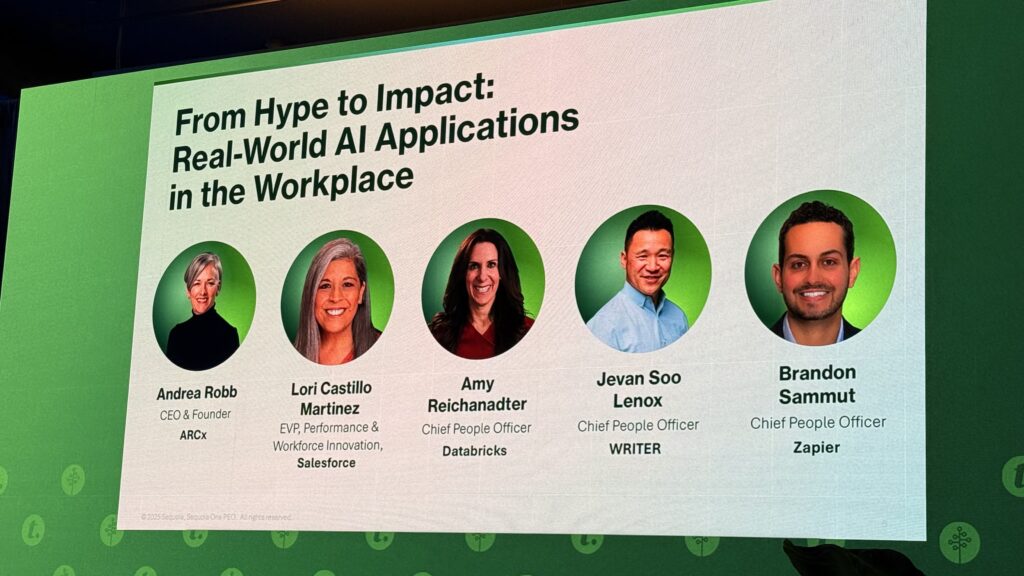
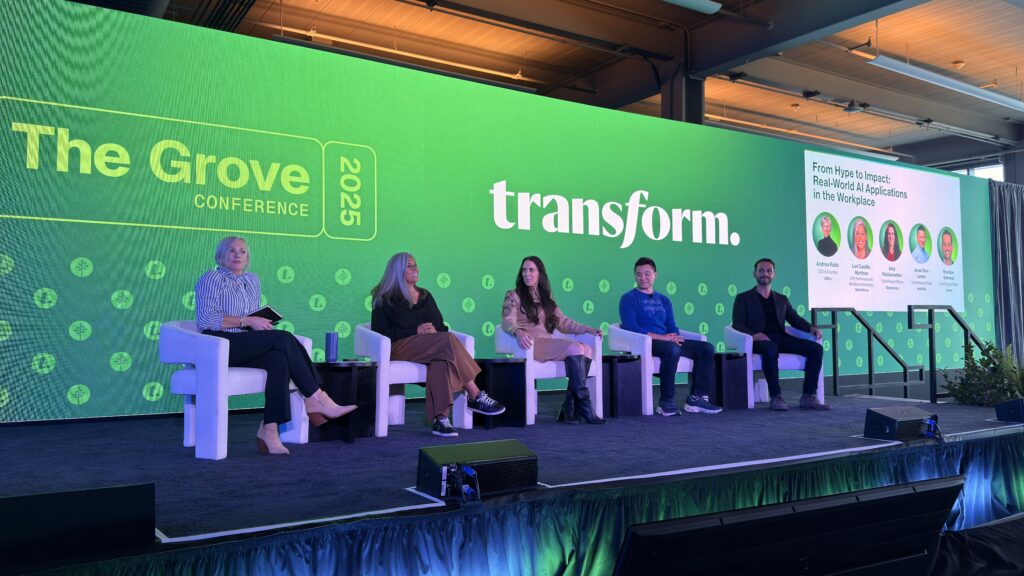
Transform’s AI Track opened with a panel moderated by Andrea Robb, CEO & Founder of ArcX, with:
- Lori Castillo Martinez, Salesforce
- Amy Reichanadter, Databricks
- Jevan Soo Lenox, WRITER
- Brandon Sammut, Zapier
The panel was candid and practical about what it really takes to implement AI at work.
Frameworks for the AI Journey
- Adoption vs Transformation (Zapier): Adoption builds individual confidence and fluency, driving daily productivity gains. Transformation requires top-down infrastructure decisions that can create 5–10x performance improvement. Both matter, and they aren’t sequential; adoption enables transformation readiness.
- Consumer-Grade Experiences (Databricks): Employees shouldn’t feel a gap between their personal AI tools and what they use at work. Efficiency and delight are both required, and tools should focus first on the organization’s biggest needs.
- Horizontal Task Analysis (Salesforce): Break work into tasks rather than jobs. Many tasks overlap across departments, which reduces fears of job replacement and increases collaboration.
Real-World Examples
- Zapier: An AI coach trained on impact behaviors captures performance feedback through Slack emoji triggers, automatically building records in Google Docs. In testing, AI-assisted reviews consistently outperformed human-only reviews, leading to 97% adoption after 2.5 years.
- Databricks: An AI-powered equity agent supported 10,000+ employees across 40 countries during a liquidity event. Available 24/7, it answered complex tax and tender questions more accurately than both the CFO and outside advisors.
- WRITER: AI-driven micro-segmentation made it possible to run end-to-end campaign creation at scale, reducing cycle times to just 10–30% of the original. Even job description agents evolved from basic bullet points to brand-voiced, competitor-aware, and talent-profiled outputs.
Key Lessons and Success Factors
- Data quality is everything. Poor data destroys trust. One early HR bot failed at Databricks because of weak data inputs.
- Pixel-perfect accuracy matters. Benefits and legal-focused AI tools must be flawless. Performance tools can launch as MVPs if expectations are clear.
- Internal marketing is critical. HR isn’t always trained in this, but adoption depends on trust and messaging, not just accuracy. As Brandon Sammut put it: “You can be right and still get it wrong.”
- Change management is harder than you think. Salesforce found that leaders often resisted redeploying specialized talent. A purely algorithmic approach to workforce planning failed; the balance of human and data-driven judgment matters.
Industry Insights and Resources
- Who to follow: Ethan Mollick (a unanimous recommendation from the panel), Stanford HAI, and Bain Capital investor insights.
- Scale matters: Panelists represented companies of every size: Salesforce (76K employees), Databricks (8.2K), Zapier (750), and WRITER (500, up from 200 just last year). The message: no matter your scale, AI has a role.
- Context check: MIT research shows a 95% failure rate for AI pilots. The panel’s advice was clear and memorable: “Be the 5%.” “Ready, fire, aim.” “Data quality wins.” “Don’t stop experimenting.”
Organizational Design Principles
- Deploy AI where it fits the purpose. Repetitive tasks humans don’t enjoy, or high-potential transformation opportunities.
- Don’t chase efficiency only; use AI to unlock growth and innovation.
- Workforce planning is still unsettled. The balance between digital labor and human talent shifts every 30–90 days.
- Growing companies may have an advantage: designing for AI from scratch rather than redesigning existing systems.
- Generalist skills are becoming more valuable than narrow specialization as roles evolve quickly.
Interactive Workshop: Where Leaders Are Now… and Where They’re Headed

The second part of the AI Track was hands-on. We asked two sets of questions, and leaders shared openly in our session: Looking Ahead: HR’s Role in Shaping the AI-Driven Workforce of the Future.
Question 1: Where are we today?
- What tasks or processes have you applied AI to unlock productivity?
Answers ranged from internal communications, compliance checks, and spreadsheet formulas to recruiting, training, SOP refreshes, resume screening, survey analytics, and even adjusting tone in emails. - What challenges or hurdles are you seeing?
This was where the honesty came out: trust, data protection, compliance risks, leadership skepticism, lack of time to experiment, siloed adoption, information overload, and legal barriers. Some noted having both AI champions and skeptics within their companies, sometimes at the executive level.
Question 2: Future predictions
- What roles/functions will AI reduce or replace?
Customer support, sourcing, analysts, administrative roles, executive assistants, copywriters, and even skilled fields like surgeons and court reporters were mentioned. - What roles/functions will expand or appear?
New positions like AI bot managers, prompt engineers, Chief AI Officers, data auditors, and AI trainers. Existing roles will shift too — executive assistants becoming advisors, engineers moving from writing code to analyzing it.
This exercise made it clear: AI isn’t just about efficiency. It’s reshaping the very structure of work.

What Leaders Can Do Now
The Grove conversations surfaced several actions leaders can take today:
- Audit current AI usage. Look at tasks, not jobs, to find overlaps and opportunities.
- Build trust. Be transparent about how data is handled and validated.
- Market your tools. Treat adoption like a product launch.
- Experiment, then scale. Run pilots broadly, but only expand what truly delivers.
- Prepare for role evolution. Invest now in skills for roles that don’t exist yet.
- Balance empathy with accountability. Hold high standards while recognizing people as whole humans.

The Grove reminded us of both the urgency and the opportunity in front of us. Employee experience and AI adoption aren’t separate, they’re interconnected. Transform was proud to lead the AI Track and to help surface real practices, predictions, and possibilities for leaders shaping the future of people + work.

We hope to see you at Transform 2026 where we can continue these thoughtful conversations on AI and other hot topics!
